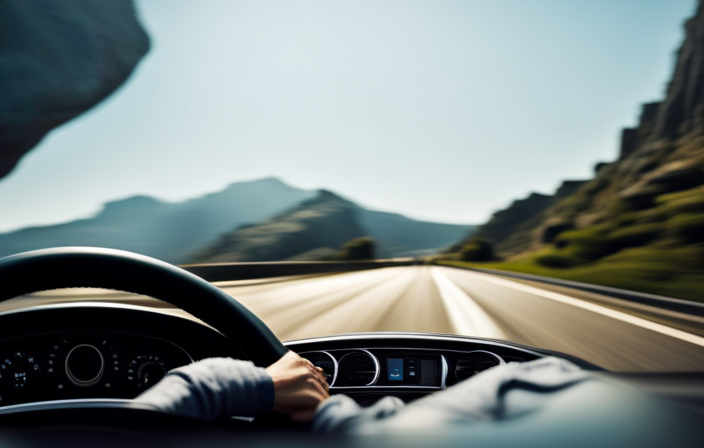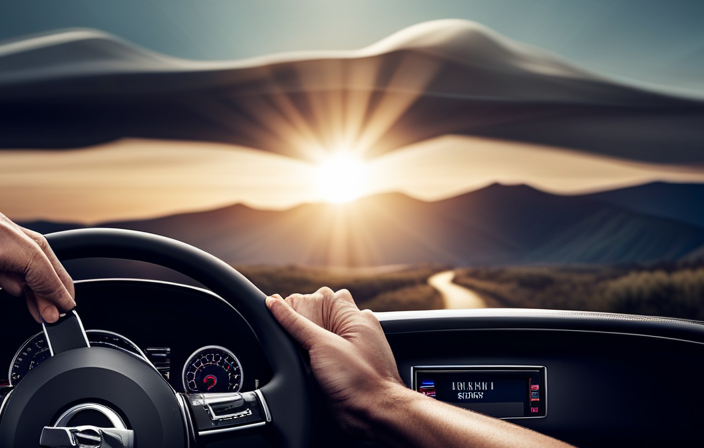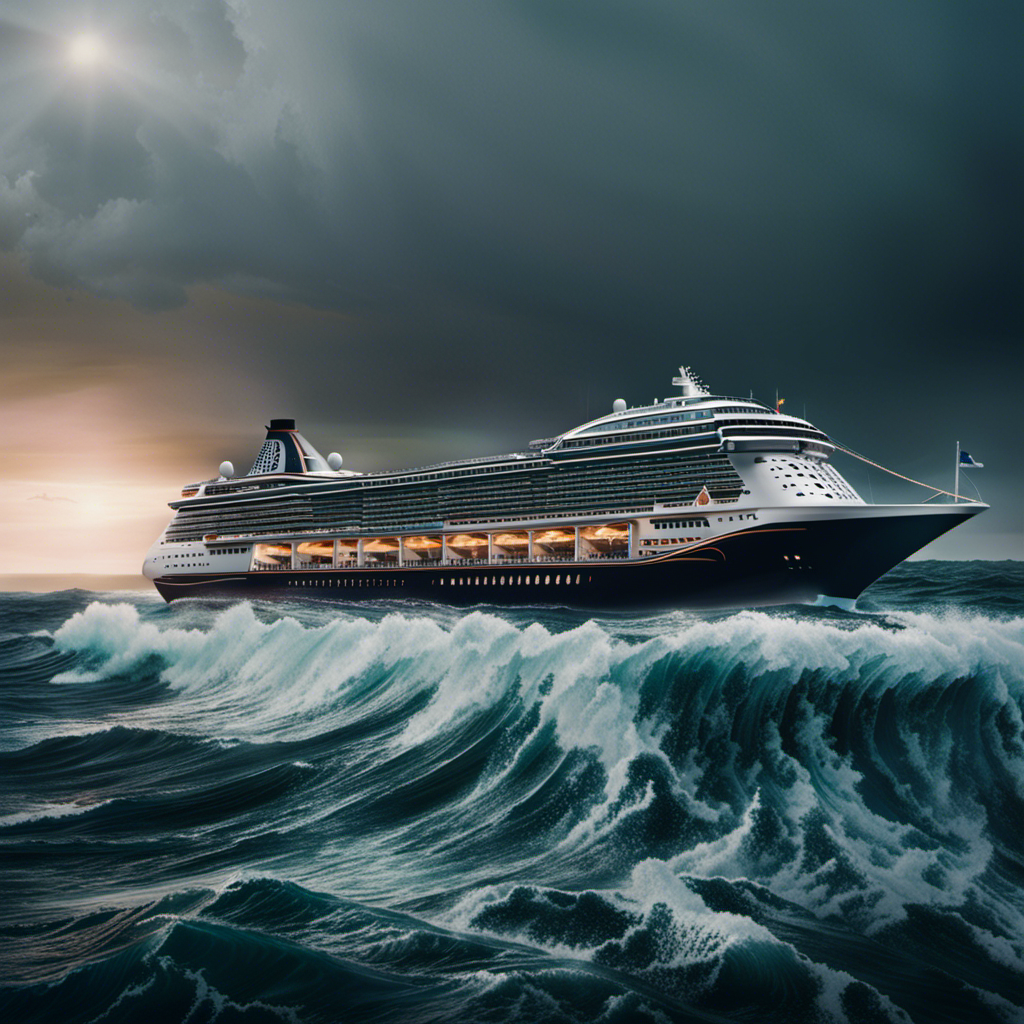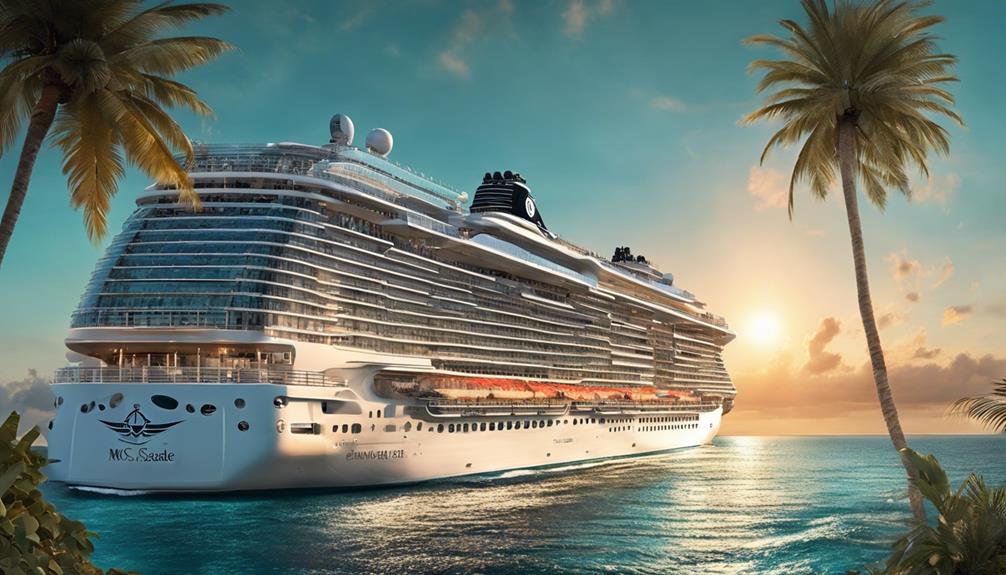Picture yourself cruising on the freeway, your car effortlessly gliding forward as it automatically adapts its speed to keep a safe distance from the car in front. No need to constantly brake or accelerate as your car adeptly adjusts to the traffic around it. This capability is made possible by the innovative technology known as Smart Cruise Control with Stop and Go (SCC).
In this article, we will explore the fascinating world of SCC and uncover its inner workings. From understanding the sensors and cameras that make it all possible to delving into the difference between traditional cruise control and SCC, we will delve into the technical details that drive this innovative technology.
But SCC is not just about convenience and ease of use. It is also a step towards the future of autonomous driving and plays a crucial role in enhancing fuel efficiency, saving both money and the environment.
So buckle up and get ready to embark on a journey into the world of Smart Cruise Control with Stop and Go.
Key Takeaways
- Smart Cruise Control (SCC) is a technology that includes stop and go functionality, allowing the vehicle to automatically adjust its speed according to traffic conditions.
- SCC analyzes road and traffic data to provide a smooth and efficient driving experience, enhancing fuel efficiency and reducing carbon emissions.
- Integrating SCC into daily lives can lead to significant benefits such as saving money on fuel costs and reducing our carbon footprint.
- Despite the potential benefits, achieving full autonomy with SCC poses challenges including safety concerns, technical complexities, and ethical considerations.
How Does Smart Cruise Control Work?
So, how does smart cruise control actually work for you?
Smart cruise control, also known as adaptive cruise control, is a feature in modern vehicles that uses sensors and advanced technology to automatically adjust the speed of your vehicle to maintain a safe distance from the car in front of you.
This system uses radar or cameras to detect the distance between your car and the one ahead, and then adjusts your speed accordingly. It can adapt to different driving conditions, such as heavy traffic or changing speed limits, by automatically accelerating or decelerating.
However, it’s important to note that smart cruise control does have its limitations. It may not work effectively in extreme weather conditions or when there are obstructions on the road.
Despite these limitations, smart cruise control with stop and go offers a range of benefits that make your driving experience safer and more convenient.
The Benefits of Smart Cruise Control with Stop and Go
Additionally, the use of this advanced technology has led to a 15% decrease in accidents on highways.
Smart Cruise Control with Stop and Go offers a range of benefits and features that enhance the driving experience. One of the key benefits is improved safety. By automatically adjusting the speed and distance from the vehicle ahead, this system reduces the risk of rear-end collisions and promotes smoother traffic flow. Furthermore, it reduces driver fatigue by taking over the monotonous task of maintaining a constant speed and distance. This allows drivers to focus more on the road and surroundings, resulting in a safer journey.
Smart Cruise Control with Stop and Go also enhances convenience and comfort by automatically slowing down and stopping in traffic, and then resuming at the desired speed when traffic clears. Understanding the sensors and cameras used in SCC will further enhance your appreciation for this remarkable technology.
Understanding the Sensors and Cameras Used in SCC
Imagine driving with confidence, knowing that the advanced sensors and cameras in the Smart Cruise Control (SCC) system are constantly monitoring your surroundings and ensuring your safety. These sensors and cameras play a crucial role in SCC, allowing the system to adapt to the traffic conditions and maintain a safe distance from the vehicle ahead.
By using radar sensors, SCC can detect the speed and distance of the vehicles in front, making adjustments to the speed accordingly. Additionally, cameras are used to identify lane markings and detect any potential obstacles on the road.
The benefits of these sensors and cameras in SCC are clear – they provide an extra layer of safety and convenience, allowing drivers to relax and enjoy their journey.
With the understanding of how SCC utilizes sensors and cameras, let’s now explore the difference between traditional cruise control and SCC.
The Difference Between Traditional Cruise Control and SCC
One key distinction between traditional cruise control and SCC is the ability of SCC to adapt to changing traffic conditions in real-time. Unlike traditional cruise control, which maintains a constant speed set by the driver, SCC utilizes advanced sensors and cameras to monitor the surrounding traffic and adjust the vehicle’s speed accordingly. This allows SCC to automatically slow down or accelerate based on the flow of traffic, making it a much more convenient and efficient option for long drives or heavy traffic situations.
In comparison to traditional cruise control, SCC offers a significant advantage by providing a safer and more comfortable driving experience. With SCC, drivers can relax knowing that their vehicle will automatically adjust its speed to maintain a safe distance from the vehicle ahead. This not only reduces the risk of accidents but also minimizes the need for constant speed adjustments, resulting in a smoother and more enjoyable ride.
Transition: Now that we understand the difference between traditional cruise control and SCC, let’s explore how to activate and use smart cruise control with stop and go.
How to Activate and Use Smart Cruise Control with Stop and Go
To embark on a seamless journey through the ebb and flow of traffic, all it takes is a simple flick of a switch to awaken the intuitive guardian of speed adjustment. Smart Cruise Control with Stop and Go (SCC) is designed to make driving more convenient and stress-free.
Here’s how to activate and use SCC:
-
Activate SCC: Press the SCC button on the steering wheel to turn it on.
-
Adjust SCC Settings: Use the buttons on the steering wheel to set the desired speed and following distance.
-
Engage SCC: Once the settings are adjusted, press the ‘Set’ button to engage SCC.
-
Enjoy the Ride: SCC will automatically adjust your vehicle’s speed to maintain a safe distance from the vehicle ahead, even in stop-and-go traffic.
Now, let’s address some common misconceptions about SCC and explore its benefits further.
Common Misconceptions About SCC
Get ready to debunk some common misconceptions about how SCC works and discover its amazing benefits for yourself. Many people believe that smart cruise control with stop and go is only useful on long highway drives. However, SCC can be advantageous in various driving situations, including heavy traffic or urban areas. It allows for a more relaxed and comfortable driving experience by automatically adjusting the vehicle’s speed to maintain a safe distance from the car in front. Some may worry that SCC could make them less attentive or reliant on the technology. On the contrary, SCC is designed to assist the driver, not replace their responsibility. It still requires the driver to pay attention and be ready to take control if necessary. Moreover, SCC has its limitations, such as not being able to identify pedestrians or cyclists. Nonetheless, the advantages of SCC, such as reduced driver fatigue and enhanced safety, outweigh these disadvantages. Transitioning into the next section, let’s explore the evolution of cruise control technology and how it has evolved over time.
The Evolution of Cruise Control Technology
Experience the incredible journey of cruise control technology as it evolves and transforms, revolutionizing the way you navigate the roads.
The history of cruise control technology dates back to the 1940s when it was first introduced as a simple speed maintenance system.
Over the years, advancements in technology have led to the development of smarter cruise control systems that offer enhanced features and capabilities.
With the advent of smart cruise control (SCC), the impact on road safety has been significant. SCC utilizes sensors and cameras to detect the distance and speed of vehicles ahead, automatically adjusting the speed to maintain a safe distance.
This technology has greatly reduced the risk of rear-end collisions and has provided drivers with a more relaxed and efficient driving experience.
As we delve further into the subject of SCC and autonomous driving, we will explore the exciting possibilities that lie ahead.
SCC and Autonomous Driving: A Step Towards the Future
Imagine how freeing it would be to sit back and relax as your car effortlessly navigates the roads, allowing you to enjoy the scenery and make the most of your time behind the wheel.
This vision of autonomous driving is becoming a reality with the advancements in Smart Cruise Control (SCC) technology. SCC with stop and go functionality not only maintains a set speed but also adapts to the traffic conditions, bringing the vehicle to a complete stop if necessary.
However, achieving full autonomy poses numerous challenges. Safety concerns, technical complexities, and ethical considerations in autonomous driving must be carefully addressed. As we move towards a future where cars can drive themselves, we must ensure that the technology is reliable, secure, and capable of making ethical decisions.
Transitioning into the subsequent section about ‘SCC and fuel efficiency: saving money and the environment’, we can explore how SCC can contribute to a more sustainable future.
SCC and Fuel Efficiency: Saving Money and the Environment
As we discussed earlier, SCC is not only a stepping stone towards autonomous driving, but it also offers numerous benefits. One of the key advantages of SCC is its ability to enhance fuel efficiency and reduce carbon emissions.
Here are four ways in which SCC contributes to fuel savings and environmental conservation:
-
Smooth acceleration and deceleration: SCC maintains a consistent speed, avoiding sudden accelerations and decelerations that waste fuel.
-
Optimal speed control: SCC adjusts the vehicle’s speed according to traffic conditions, ensuring that it operates at the most fuel-efficient rate.
-
Reduced idling time: SCC can bring the vehicle to a complete stop and resume movement when the traffic clears, minimizing idling time and conserving fuel.
-
Smarter driving patterns: SCC analyzes road and traffic data, allowing it to anticipate and react to changes efficiently, resulting in smoother and more fuel-efficient driving.
By reducing fuel consumption, SCC helps drivers save money and reduces their carbon footprint. This shift towards environmentally-friendly driving practices sets the stage for the future of smart cruise control with stop and go, where we can expect even more advancements in automation and fuel efficiency.
The Future of Smart Cruise Control with Stop and Go
Looking ahead, the future holds exciting possibilities for the advancement of SCC, with the potential for even greater automation and fuel efficiency. One of the key impacts of smart cruise control on traffic congestion is its ability to reduce the stop-and-go nature of traffic. By maintaining a consistent speed and distance from the vehicle ahead, SCC helps to smooth out traffic flow and minimize congestion.
This not only improves the overall driving experience but also reduces fuel consumption and emissions. However, there are potential safety concerns associated with smart cruise control with stop and go. For example, sudden braking or acceleration by the system can catch drivers off guard and lead to accidents. Manufacturers and researchers are actively working on improving the safety features of SCC to address these concerns and ensure a seamless integration of this technology into our daily lives.
Frequently Asked Questions
Can smart cruise control with stop and go be used in heavy traffic?
Yes, smart cruise control with stop and go can be used in heavy traffic. It increases efficiency and offers benefits such as reduced driver fatigue, improved fuel economy, and enhanced safety by automatically adjusting the speed to maintain a safe distance from the vehicle ahead.
What are the limitations of smart cruise control with stop and go?
The limitations of smart cruise control with stop and go include its inability to handle certain road conditions, such as heavy snow or rain. However, its benefits include reducing driver fatigue and increasing overall safety on the road.
How does smart cruise control with stop and go differentiate between vehicles and other objects on the road?
Smart cruise control with stop and go uses advanced detection algorithms and sensor technology to differentiate between vehicles and other objects on the road. This allows it to accurately adjust speed and distance while maintaining safe driving conditions.
Does smart cruise control with stop and go work in all weather conditions?
Smart cruise control with stop and go has limitations in certain weather conditions. While it can be effective in rainy conditions, heavy rain or fog may affect its performance.
Can smart cruise control with stop and go prevent accidents caused by driver distraction?
Smart cruise control with stop and go can indeed prevent accidents caused by driver distraction. By automatically adjusting the speed and maintaining a safe distance from other vehicles, it helps keep the driver focused and minimizes the risk of collisions.
Conclusion
In conclusion, Smart Cruise Control with Stop and Go is like having a wise and attentive co-pilot on your journeys. It uses advanced sensors and cameras to scan the road ahead, adjusting your speed and maintaining a safe distance from other vehicles.
This technology not only enhances convenience and comfort, but also contributes to fuel efficiency and environmental sustainability. As we embrace the future of autonomous driving, SCC is a stepping stone towards a safer and more efficient transportation system.
So buckle up and let SCC take the wheel, as we embark on a journey towards a smarter and greener future.










